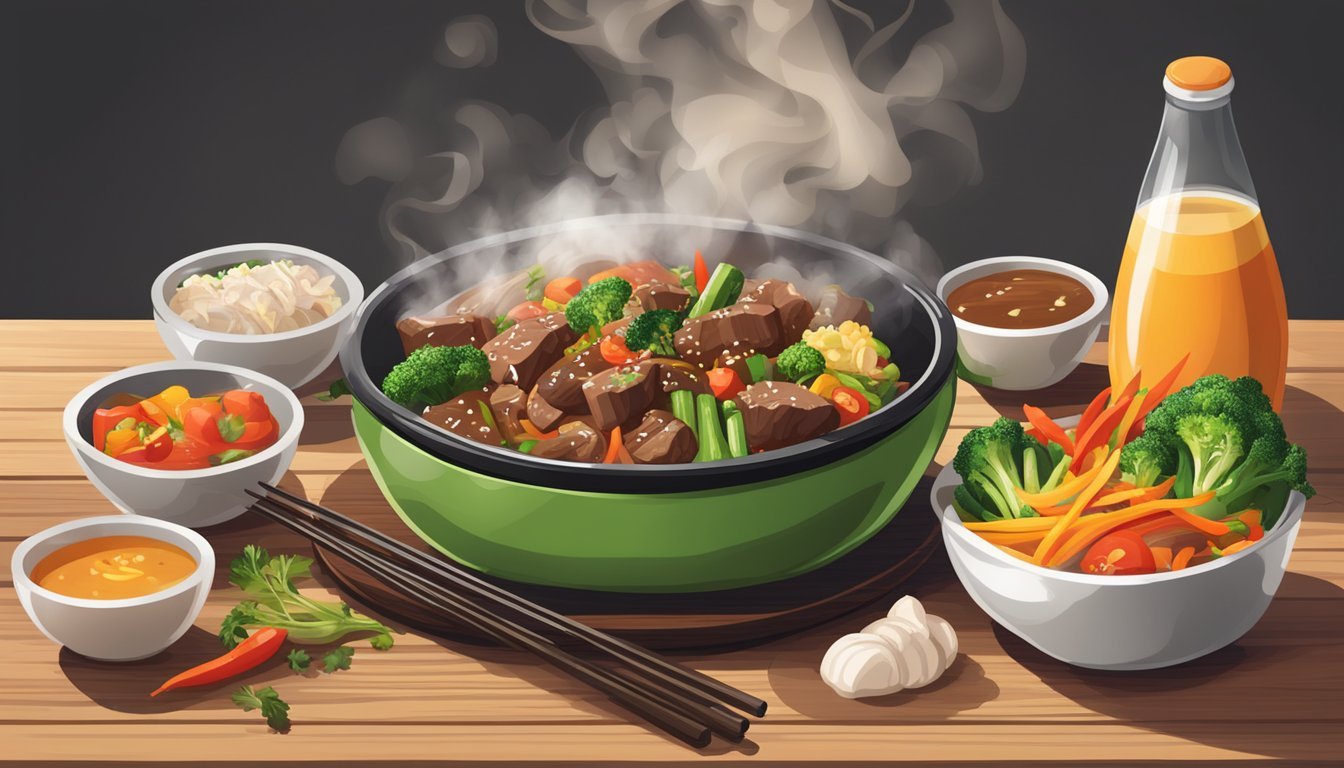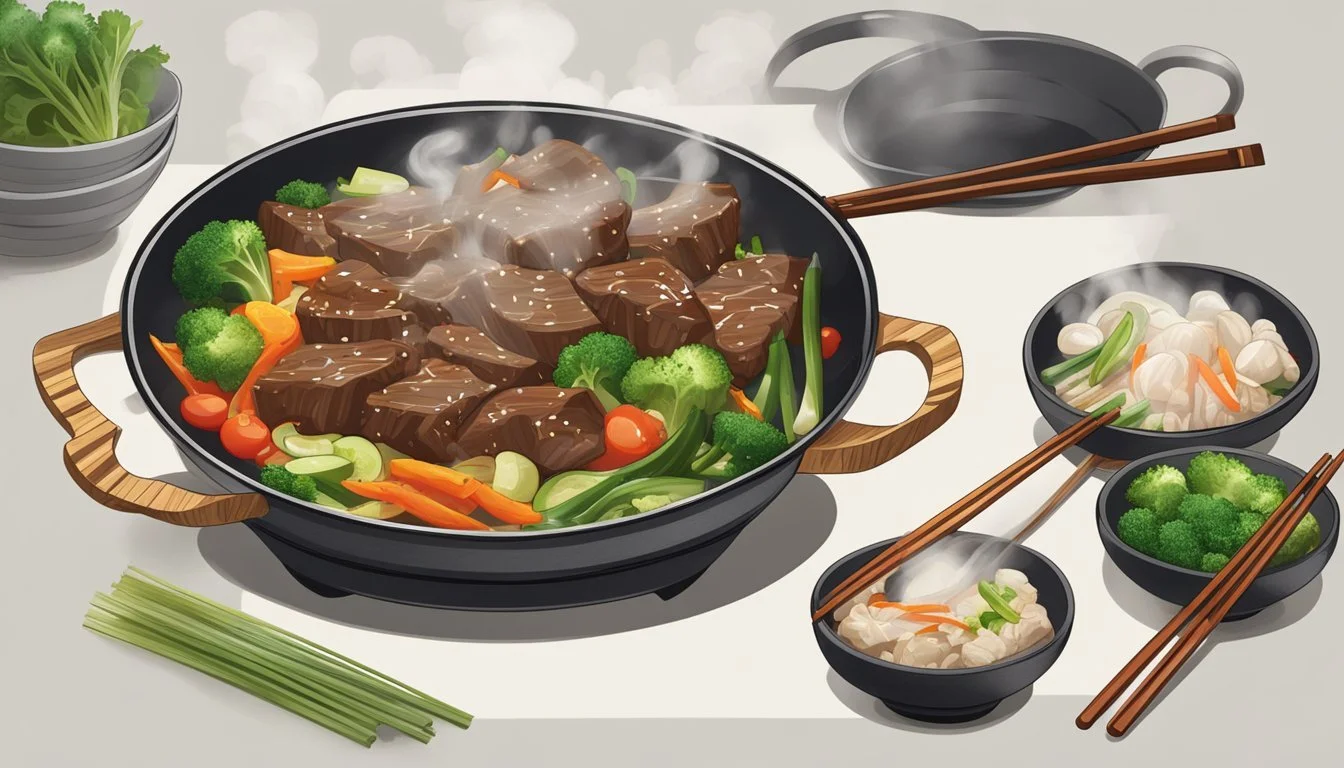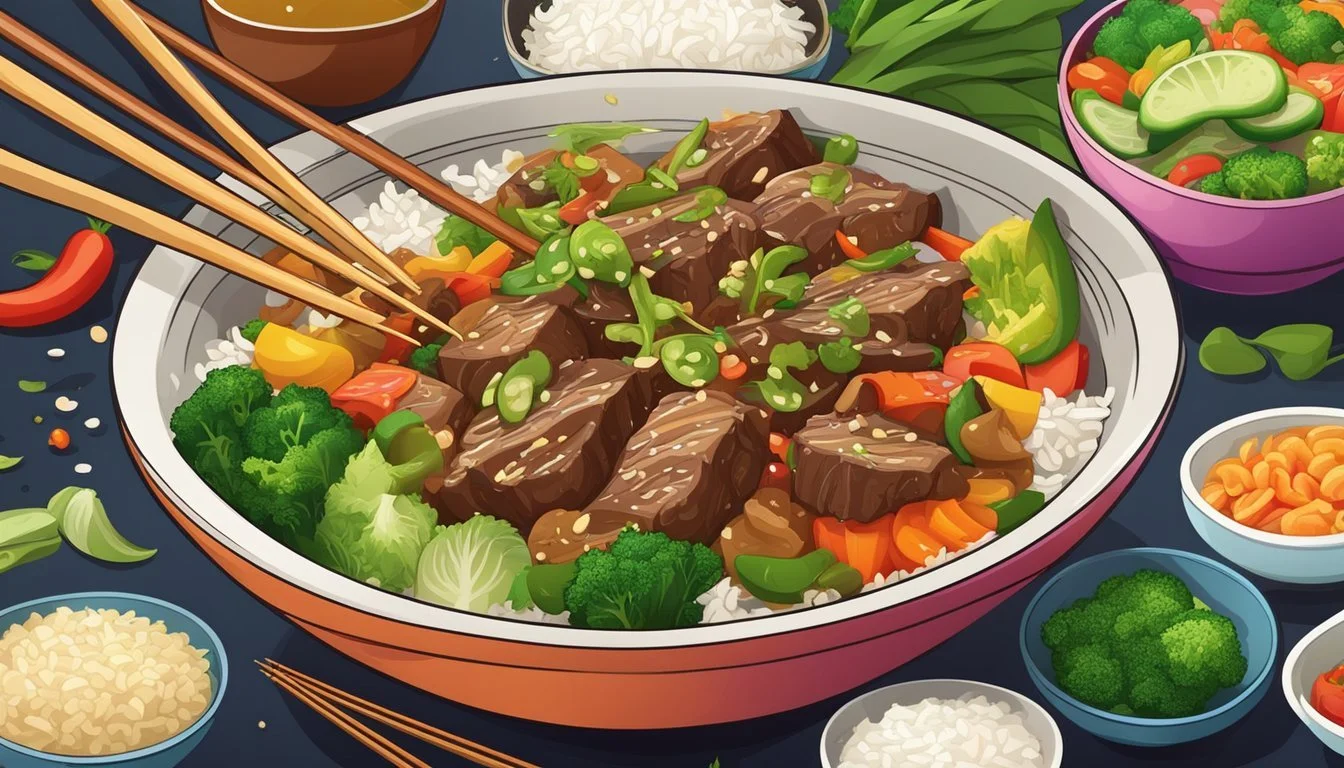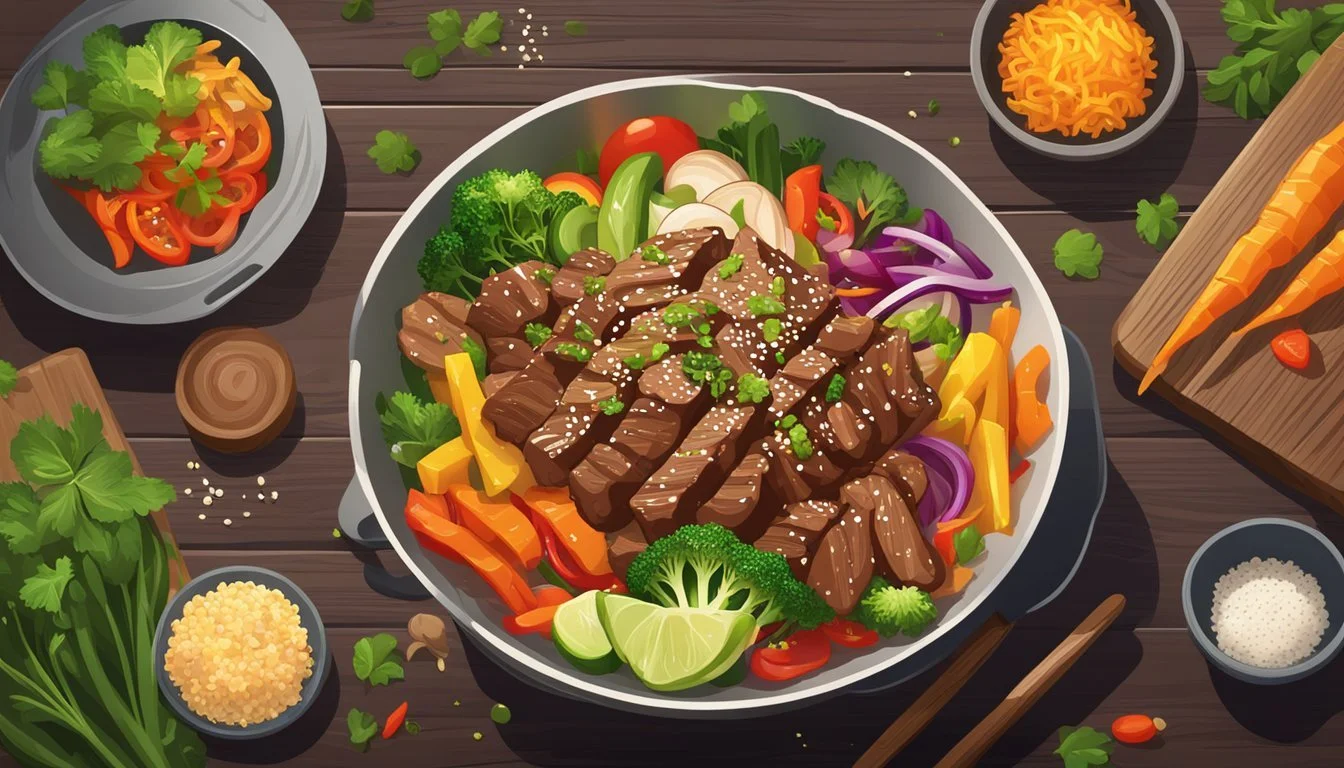How Long Do Beef Stir-Fry Bowls Last?
Expert Tips for Freshness
In the fast-paced world of quick and delicious meals, beef stir-fry bowls take center stage for many cooking enthusiasts. This versatile dish not only provides an array of flavors but also stands out for its relatively simple preparation. Yet, a common question arises for those looking to meal prep or manage leftovers: beef stir-fry bowls typically last about 3 to 4 days when stored properly in the refrigerator.
Ensuring your beef stir-fry remains fresh starts with immediate refrigeration after cooking. Using airtight containers helps maintain the quality and prevents the dish from absorbing other odors in the fridge. These steps are essential to keep your meal safe and tasty for several days.
Whether you’re making a Mongolian-inspired beef stir-fry or a colorful mix with vegetables, knowing how long you can store your dish is vital. This knowledge allows you to enjoy the convenience of ready-to-eat meals without compromising taste and safety.
Understanding Beef Stir-Fry
The key to a delicious beef stir-fry lies in the quality of ingredients, the choice of beef, and the way it is cooked. Here, each element is broken down to ensure a flavorful and tender stir-fry.
Key Ingredients for Beef Stir-Fry
A successful beef stir-fry relies on a balance of flavors and textures. Soy sauce, garlic, ginger, and brown sugar form the base of a flavorful marinade. Additional seasoning such as pepper and sesame oil enhances the taste.
Vegetables like bell peppers, carrots, and broccoli add color and crunch. For thickening, cornstarch is essential, while green onions and sesame seeds provide the final touch. Using fresh, high-quality ingredients is critical to achieving the best results.
Choosing the Right Cut of Beef
Selecting the right cut of beef significantly impacts the texture. Flank steak, ribeye, sirloin, tenderloin, and round are popular choices. Each has unique properties:
Flank Steak: Known for its rich flavor and good marbling.
Ribeye: Offers excellent tenderness and taste.
Sirloin: A lean option with a robust flavor.
Tenderloin: Exceptionally tender but pricier.
Round: Economical but requires proper marinating.
These cuts should be sliced thinly against the grain to maximize tenderness and ensure even cooking.
Optimal Cooking Methods for Stir-Fry
Using a wok or a large skillet over high heat is crucial. Begin by heating the wok until it’s almost smoking hot. Add a good amount of oil to create a non-stick surface. The beef should be seared quickly to achieve a browned exterior while keeping the inside juicy.
Stir-frying involves constant movement to prevent sticking and ensure even cooking. It's best to cook in small batches to avoid overcrowding the pan, which can lead to steaming rather than searing. The entire process is fast, preserving the beef's tenderness and flavor. Ensuring a hot pan is a key factor in achieving the perfect stir-fry.
Preparing Beef Stir-Fry Bowls
Marination and proper stir-fry techniques are crucial for creating flavorful, tender beef stir-fry bowls. Detailed steps for effective marination and stir-fry cooking procedures are outlined below.
Effective Marination Techniques
Marinating the beef is essential to enhance its flavor and tenderness. Start by slicing the beef thinly. Combine soy sauce, brown sugar, cornstarch, and low sodium soy sauce in a bowl to create a marinade. Add minced garlic and ginger for additional depth of flavor.
For every pound of beef, use about 1/4 cup of the marinade mixture. Ensure every piece is well-coated. Allow the beef to marinate for at least 30 minutes, but for the best results, refrigerate it for a few hours.
Stir-Fry Cooking Procedure
Heat a wok or large skillet over high heat. Add 1-2 tablespoons of vegetable oil or olive oil. When the oil is shimmering, add the marinated beef. Spread it out to ensure even contact with the pan surface. Stir-fry the beef quickly, constantly stirring to avoid burning.
Once the beef is browned and just cooked through, typically in 2-3 minutes, remove it from the pan. Add another tablespoon of oil and toss in your vegetables. Stir-fry for a few minutes until they are tender-crisp, then return the beef to the pan. Mix everything with a bit of sesame oil and additional stir fry sauce if desired. Serve over cooked rice.
By following these steps, you can prepare delicious, tender, and flavorful beef stir-fry bowls.
Beef Stir-Fry Bowl Composition
Beef stir-fry bowls typically consist of a grain base, a variety of vegetables, and various seasonings to enhance flavor and texture. Each element contributes to the nutritional value and overall taste experience of the dish.
Selecting a Grain Base
A proper grain base is essential in a beef stir-fry bowl. White rice and brown rice are commonly used, each offering distinct textures and nutritional benefits. While white rice is softer and quicker to cook, brown rice provides more fiber and nutrients.
For more flavor, consider using fried rice, which combines cooked rice with eggs, vegetables, and soy sauce. Quinoa or wild rice can be alternatives for those seeking to add protein and unique textures. Choose grains that complement the flavors of the beef and seasonings.
Incorporating Vegetables
A mix of colorful vegetables not only enhances the visual appeal but also adds essential nutrients. Bell peppers, carrots, and broccoli are staple choices, each contributing different textures and flavors.
Snap peas, baby corn, and bok choy add crunch, while mushrooms and onions bring umami depth. Red bell peppers and broccoli florets add vibrant color, and crispiness. Including cabbage or green onions can provide additional flavor layers. Ensure vegetables are cut uniformly to promote even cooking and a balanced bite.
Enhancing Flavor and Texture
Seasonings and sauces are crucial for achieving a balanced flavor profile. Soy sauce and oyster sauce are traditional choices that add saltiness and depth. Combine with garlic, ginger, and pepper for a classic taste.
For sweetness, consider honey, teriyaki sauce, or maple syrup. Coconut aminos serve as a soy-free alternative. Enhance texture with toasted sesame seeds and sesame oil. Cornstarch can be used to thicken sauces, helping to coat the beef and vegetables evenly. Experiment with these elements to achieve a harmonious balance of sweet, savory, and umami flavors.
Serving and Presentation
When serving beef stir-fry bowls, careful assembly and thoughtful topping selections can elevate the dish. This section will guide you through both, emphasizing texture, flavor, and visual appeal.
Bowl Assembly
Start by placing a base layer of cooked rice in the bowl. White rice or brown rice are popular options, but cauliflower rice or quinoa can be used for a healthier twist.
Next, spoon the beef stir fry on top of the rice. Ensure the beef and vegetables are evenly distributed to create a balanced bite every time.
For added convenience, use shallow, wide bowls. These keep ingredients visible and make the meal easier to eat. Arrange the beef slices and vegetables neatly to enhance the presentation.
A drizzle of the stir-fry sauce over the top can add a glossy finish and extra flavor. Finish with a light sprinkle of scallions or green onions to add a fresh note to each bite.
Topping Selections
An array of toppings can enhance the flavor and texture of your beef stir-fry bowls.
Toasted sesame seeds add a nutty element and a pleasant crunch.
Green onions or scallions provide a sharp, fresh contrast.
Sesame oil drizzles can subtly enhance the overall flavor profile.
Pickled vegetables like kimchi add tang and complexity.
For additional texture, consider crispy shallots or garlic chips. Fresh herbs, such as cilantro or basil, can also add vibrant flavors.
Balancing these toppings is key to creating an appealing and enjoyable dish. Prioritize a mix of colors, textures, and flavors to achieve a well-rounded bowl.
Storing Beef Stir-Fry
Proper storage of beef stir-fry ensures its freshness and safety for later consumption. Key points include refrigerating within two hours of cooking and using airtight containers for storage.
Refrigeration Best Practices
Refrigerate Promptly: Place the beef stir-fry in the refrigerator within two hours of cooking to inhibit bacterial growth.
Airtight Containers: Use airtight containers to maintain flavor and avoid contamination. This also helps in retaining moisture.
Storage Duration: When properly stored, beef stir-fry can last up to 3-4 days in the refrigerator. Beyond this period, the quality and safety may significantly decline.
Leftovers: Ensure leftovers are cooled quickly before refrigeration. Spread them out in shallow containers for faster cooling.
Reheating: When ready to eat, reheat the beef stir-fry to an internal temperature of 165°F (74°C) to ensure it is safe to consume. Use a microwave, stove, or oven for best results.
Freezing and Thawing Beef Stir-Fry
Freezer Storage: For extended storage, freeze the beef stir-fry. Use freezer-safe, airtight containers or heavy-duty freezer bags.
Label and Date: Clearly label and date the containers to keep track of storage time.
Freezing Duration: Beef stir-fry can be kept in the freezer for up to 3 months without significant loss of quality.
Thawing: Thaw frozen beef stir-fry in the refrigerator for 24 hours before reheating. Avoid thawing at room temperature to prevent bacterial growth.
Reheating: After thawing, reheat the stir-fry thoroughly until it reaches an internal temperature of 165°F (74°C). This can be done on the stove, in the oven, or using a microwave.
Reheating Leftover Beef Stir-Fry
Reheating leftover beef stir-fry can be done effectively through various methods to ensure it retains its flavor and texture. Stovetop and microwave techniques are practical, while safety considerations are essential for a pleasant dining experience.
Stovetop Reheating Technique
For optimal results, reheating leftover beef stir-fry on the stovetop is recommended. Start by heating a wok or large skillet over medium-high heat. Add 1-2 tablespoons of oil to the pan to prevent sticking and maintain moisture.
Once the oil is hot, add the leftover beef stir-fry. Stir occasionally and cook for 2-3 minutes until the beef is warmed through. This method helps retain the original flavors and textures. Serve immediately for best results.
Microwave Reheating Guidelines
Using a microwave is a quick alternative for reheating beef stir-fry. Place your leftovers in a microwave-safe dish, ensuring it’s not overfilled. Cover with a paper towel or lid to prevent splattering and retain moisture.
Set the microwave to medium power and reheat for 90 seconds. Stir the contents halfway through to ensure even heating. Check for doneness and heat for additional increments of 15-30 seconds if necessary. This method is convenient but may slightly alter the texture.
Safety Considerations
Proper storage of leftover beef stir-fry is crucial for food safety. Always store leftovers in an airtight container and refrigerate within two hours of cooking. Consume the stir-fry within 3-4 days to avoid the risk of foodborne illnesses.
When reheating, ensure the internal temperature reaches 165°F (74°C) to kill any harmful bacteria. Avoid reheating multiple times, as this can degrade the quality and safety of the food. Following these guidelines helps ensure a safe and tasty meal experience.
Recipe Variations and Ideas
There are various ways to make beef stir-fry bowls fit different tastes and occasions. From quick weeknight dinners to internationally inspired flavors, these ideas offer something for everyone.
Creating a Weeknight Meal
A beef stir-fry bowl is perfect for a quick weeknight meal. Using simple ingredients and a single skillet, this dish can be ready in just 20 minutes.
Start with ground beef or thinly sliced beef, then add a blend of your favorite vegetables like bell peppers, broccoli, and zucchini. For seasoning, a teriyaki sauce or a mixture of soy sauce, garlic, and a touch of brown sugar works well to give it a savory-sweet flavor.
Serve the stir-fry over steamed rice or noodles. This makes it not just delicious but also convenient for busy evenings.
International Inspired Dishes
For those who love to experiment with different cuisines, there are many international twists you can add to your beef stir-fry bowls.
A Korean beef bowl often includes ginger, garlic, and a hint of red pepper flakes. It's typically finished with a drizzle of sesame oil for that nutty flavor. Serve it with kimchi and a poached egg to make it more authentic.
A Mongolian beef bowl can be made with thinly sliced beef, tossed in a sweet and savory sauce with soy sauce, brown sugar, and hoisin sauce. Add green onions and serve over rice for a takeout-style dish at home.
These recipes bring international flavors to your kitchen while still being easy to prepare.









